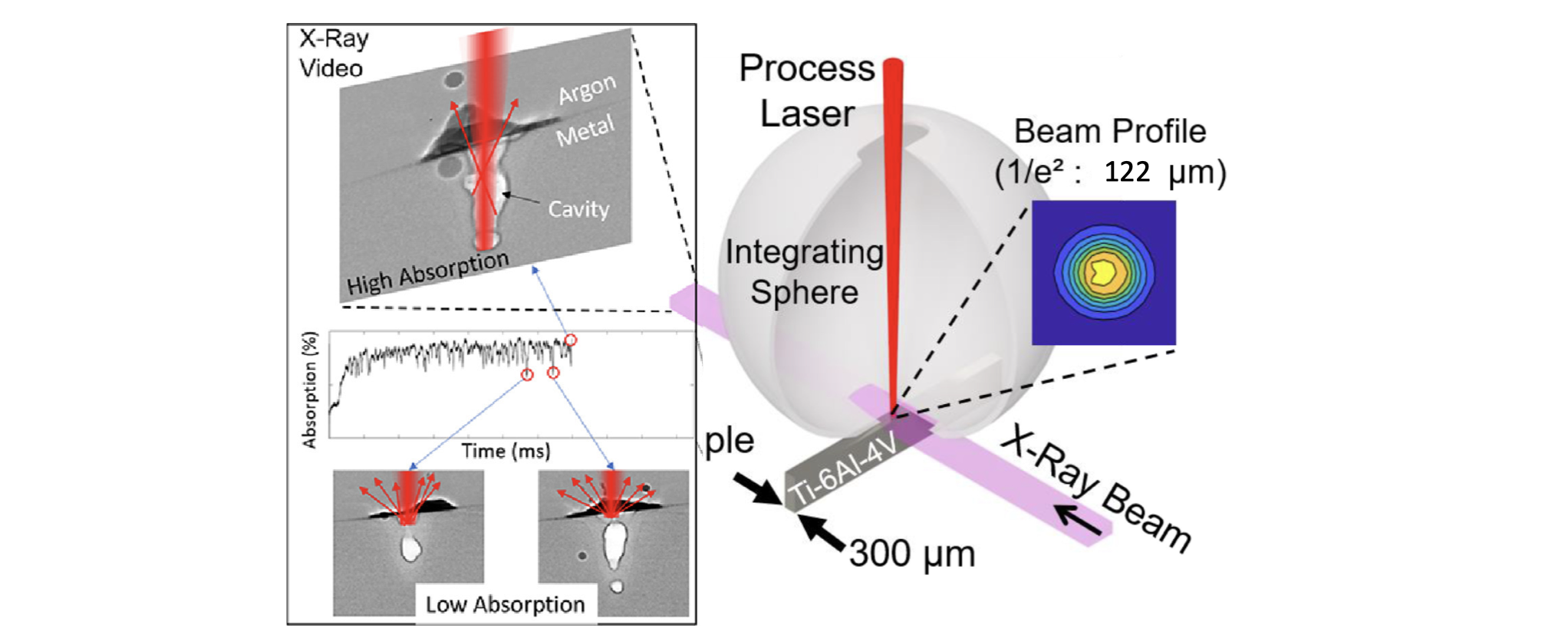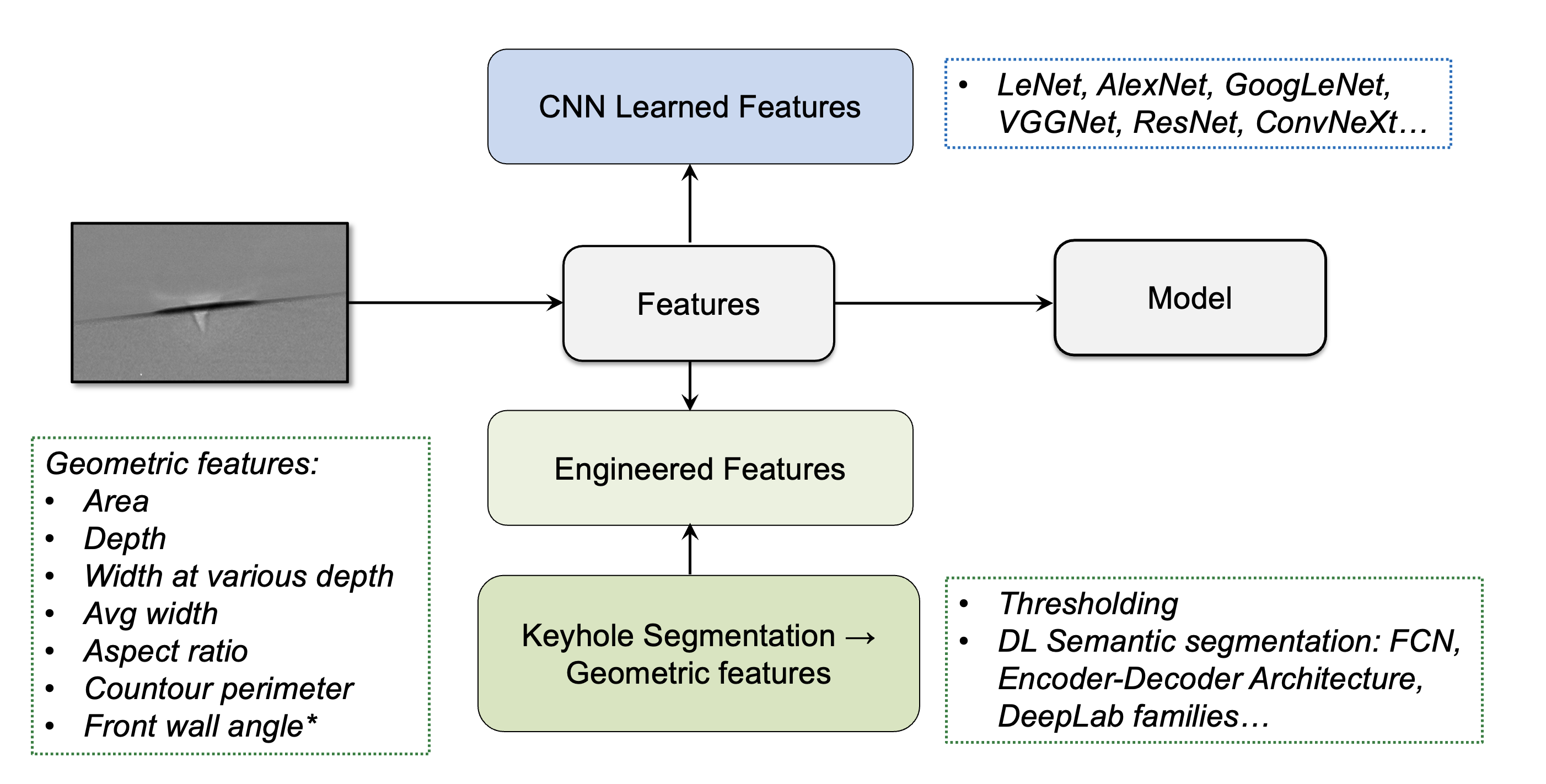Deep Learning Approaches for Time-Resolved Laser Absorption Prediction
Published:
The quantification of the amount of absorbed light is essential for understanding laser-material interactions and melt pool dynamics in order to minimize defects in additively manufactured metal components. The geometry of a vapor depression, also known as a keyhole, in melt pools formed during laser melting is closely related to laser absorptivity. This relationship has been observed by the state-of-the-art in situ high speed synchrotron x-ray visualization and integrating sphere radiometry. These two techniques create a temporally resolved dataset consisting of keyhole images and the corresponding laser absorptivity. It is then possible to use deep learning techniques to predict absorption for keyhole x-ray images, reducing dependence on costly direct experimental measurements and multi-physics modeling.

In this work, we developed two pipelines for energy absorption prediction: one-stage approach and two-stage approach. The one-stage approach adopts convolutional neural networks (ConvNets) to learn feature kernels automatically via training and directly yields an absorption value for each x-ray image using the fully connected layer and regression layer. The two-stage approach first generates semantic image segmentation for keyholes, then extract the geometric keyhole features, and finally applies regression models. Motivation for the second approach is that many artificial intelligence tasks can be solved by carefully designing the right set of features to extract for the task and then feeding these features to a simple machine learning algorithm. This is especially applicable in this case, where we already have a clear understanding of which features are relevant and should be extracted. On the other hand, the main advantage of one-stage approach to the stage-stage approach is that it automatically detects the important features and make a prediction without any human supervision. It is also a more computationally efficient and straightforward process for users with little machine learning background to pick up as only one model is involved in the entire pipeline. However, the model's interpretability is less than satisfactory.

For the semantic segmentation part in the two-stage approach we created a keyhole segmentation dataset with ground truth masks from four different metallic materials and both stationary and scanning laser conditions to cover large sample space, and experimented with different segmentation models to evaluate the effectiveness to pretrained weights learned on ImageNet and to achieve automatic, robust and accurate keyhole segmentaions. We also compare the two different absorption prediction pipelines in terms of accuracy, interpretability and generalizability on unseen materials.
Check out the official keyhole website I build for this project, where I share the training data, trained models (including the ConvNeXt-t in the one-stage approach, UNet semantic segmentation model, and Random Forest model in the two-stage approach), as well as model training code.
To make is easy for people who are interested in trying the models, please visit this website for online keyhole laser energy absorptance prediction. I wrote this web app using Flask and Docker, and it is deployed on AWS EC2 for public access.
Check out the official keyhole website I build for this project, where I share the training data, trained models (including the ConvNeXt-t in the one-stage approach, UNet semantic segmentation model, and Random Forest model in the two-stage approach), as well as model training code.
To make is easy for people who are interested in trying the models, please visit this website for online keyhole laser energy absorptance prediction. I wrote this web app using Flask and Docker, and it is deployed on AWS EC2 for public access.
Reference: manuscript was accepted to npj Computational Materials in Oct 2023.
